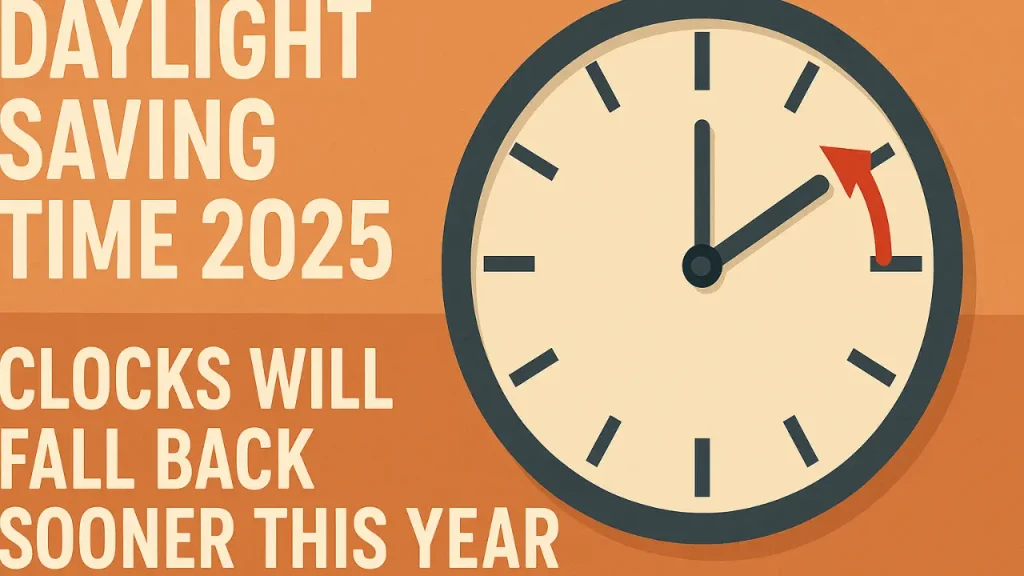Key Takeaways at a Glance
-
The U.S. Department of Agriculture (USDA) will fully enforce new work requirements for certain adults receiving Supplemental Nutrition Assistance Program (SNAP) benefits starting November 1.
-
The rules focus on Able-Bodied Adults Without Dependents (ABAWDs) and generally require at least 80 hours per month of work or qualifying activities.
-
The long-standing time limit returns nationwide: without meeting the work requirement, benefits are generally limited to three months in any thirty-six-month period.
-
States can still use limited waivers and exemptions, but flexibility is tighter, with stricter data-based thresholds and caps on the number of individual exemptions they can issue.
-
Households with children, people who are pregnant, seniors, and individuals with verified disabilities are not subject to the ABAWD time limit.
Why This Change Matters Now
SNAP is the nation’s largest anti-hunger program, helping low-income households afford groceries through an electronic benefit transfer (EBT) card accepted at most food retailers and farmers markets. In recent years, participation hovered around the tens of millions of people nationwide, reflecting both persistent economic need and SNAP’s role as an automatic stabilizer during downturns. Over the last several years, pandemic-era flexibilities and temporary waivers softened or paused work rules in many places. As those flexibilities sunset, the USDA is moving to a standardized national baseline.
The November 1 shift matters for workers, caseworkers, grocers, and state agencies because it synchronizes policy and resumption of enforcement across the map. That means fewer gray areas for eligibility, documentation, and compliance—while also raising the stakes for outreach, training slots, and data systems that track hours and exemptions.
Who Is Affected
The rules specifically target ABAWDs—Able-Bodied Adults Without Dependents—within a defined age range who do not live with minor children and who do not have a verified disability. Affected individuals must meet a monthly work threshold or participate in approved activities to keep receiving SNAP beyond the three-month limit within a three-year window.
Groups not subject to the ABAWD time limit include:
-
People who are pregnant
-
Individuals who are medically certified as physically or mentally unfit for employment
-
People living in a SNAP household that includes a child under 18
-
Older adults above the ABAWD age range
-
Individuals already exempt under specific federal or state rules (for example, certain students, people in drug or alcohol treatment programs when recognized by SNAP, or those experiencing domestic violence with a good-cause determination)
Important nuance: The work requirement applies to individuals, not households. In a shared housing arrangement, one adult’s status can differ from another’s depending on age, disability status, and whether they are caring for a minor child.
The Core Requirement Explained
At the heart of the policy is a monthly participation standard. Affected adults must generally complete 80 hours per month of one or a mix of the following:
-
Employment: Paid work for wages, salary, tips, or self-employment that can be verified.
-
Workfare: Participation in a work experience or community service program arranged by a state or local agency to satisfy SNAP requirements.
-
Education and Training: Enrollment and progress in a SNAP Employment and Training (E&T) program or similar workforce program that the state counts toward the requirement.
-
Combination: Any combination of the above that totals at least 80 hours in a given month.
If someone does not meet the monthly threshold and does not qualify for an exemption, they can receive SNAP for only three months in a 36-month period. After using those three countable months, benefits end unless the person regains eligibility by meeting the requirement for a sufficient period, moving to an area with a qualifying waiver, or receiving an allowable exemption.
What Changes November 1
The November 1 date marks the point at which USDA expects full, nationwide enforcement after a multi-year period of flexibilities and phased transitions. Several operational shifts will be noticeable:
-
Stricter Baselines: States must apply the time limit wherever the underlying statute and USDA guidance require it.
-
Tighter Waiver Use: While area waivers are still permitted when local labor market conditions meet specific data tests, they are narrower and must be justified with current metrics.
-
Exemption Caps: States have a limited pool of discretionary exemptions they can assign to individuals each fiscal year; administrative oversight on how those are used is increasing.
-
Documentation and Data: States are expected to maintain stronger verification mechanisms (for hours, participation, and exemptions), improve notices, and reduce delays that could compromise access for eligible households.
At a Glance: The New Baseline
| Topic | Standard Under Nationwide Enforcement |
|---|---|
| Who is subject | Able-Bodied Adults Without Dependents within the defined age range, not living with a minor child, and without a verified disability |
| Monthly threshold | 80 hours of employment, workfare, or approved training/education |
| Time limit | Three countable months of SNAP in a 36-month period when not meeting the requirement |
| Exemptions | Pregnancy, verified medical unfitness, living with a child under 18, other statutory exemptions |
| State area waivers | Allowed only where data show elevated unemployment or insufficient jobs under federal criteria |
| Discretionary exemptions | States have capped annual allotments to assign case-by-case |
| Documentation | Pay stubs, employer letters, timesheets, program attendance records, or caseworker documentation for good cause |
| Good cause | Temporary circumstances (illness, missed shifts due to verified emergencies) can excuse shortfalls when documented |
How the Time-Limit Clock Works
Understanding the three-months-in-thirty-six rule is crucial:
-
Countable months accrue when a person receives SNAP in a month and does not meet the 80-hour requirement, has no qualifying exemption, and does not live in a waived area.
-
Stopping the clock happens when the person meets the requirement, moves into a waived area, or receives an approved exemption.
-
Resetting eligibility often requires a documented period of compliance (for example, meeting the hours for a defined span, such as 80 hours in a 30-day period or participating in a qualifying program) before the person can requalify for benefits after exhausting their three countable months.
What Counts as Work or Training
The requirement is broader than a traditional job. States can credit hours from a mix of activities, so long as the activity is approved and verifiable:
-
Paid employment: Standard jobs, gig work, or self-employment. For self-employment, states typically convert verified net earnings to hours at minimum wage or another approved method.
-
SNAP E&T programs: These may include job search training, short-term certifications, high-school equivalency preparation, or sector-based skills programs.
-
Workfare/community service: Structured placements where the household’s SNAP allotment is divided by minimum wage to determine a monthly hour requirement.
-
Education tied to employment outcomes: In many states, short-term credential programs aligned with local labor demand can qualify.
Exemptions and Good-Cause Relief
Exemptions remove the time limit for those who should not be subject to it. For example, someone medically unfit for employment with proper documentation does not need to meet the 80-hour standard. A parent or other adult living with a child under 18 is not an ABAWD and therefore not subject to the time limit. Pregnant individuals are exempt, and certain students or participants in recognized treatment programs may also qualify under specific criteria.
Good cause addresses temporary setbacks. If illness, transportation breakdowns, a reduction in scheduled hours, or comparable short-term disruptions cause a person to miss the 80-hour mark in a given month, they can retain eligibility when those circumstances are documented and accepted by the agency. Good-cause policies are not blanket waivers; they are case-by-case determinations.
What States Must Do Differently
With enforcement aligning nationwide, state SNAP agencies are tasked with running a more precise and time-sensitive system:
-
Notify beneficiaries early and clearly about the approaching deadline, the 80-hour standard, and what documentation is required.
-
Expand or coordinate E&T capacity so there are enough training and workfare slots for people who choose non-employment paths to compliance.
-
Strengthen verification pipelines with employers and training providers to reduce gaps or delays that could lead to erroneous terminations.
-
Track countable months accurately across county or regional lines, since people move for jobs and housing.
-
Improve appeal and fair-hearing processes so participants who were wrongly cut off can be restored quickly.
What Individuals Should Do Now
For anyone who might be subject to the ABAWD rule after November 1, the best strategy is to get ahead of the paperwork:
-
Confirm your status: If you live with a child under 18 or have a medical limitation, tell your caseworker and provide documentation.
-
Collect proof of hours: Gather recent pay stubs, employer letters, or timesheets. If you piece together multiple gigs, keep a simple log.
-
Ask about SNAP E&T: If you are underemployed, an E&T program can help you meet hours while building skills.
-
Learn your state’s good-cause process: If you are temporarily unable to meet the monthly threshold, ask how to document the reason.
-
Update your contact info: Notices often arrive by mail, text, or portal messages; make sure the agency can reach you.
Common Scenarios and How They Play Out
Variable-hour worker:
A retail worker’s hours fluctuate between 10 and 25 per week. In a light month they might only reach 60 hours. If they are not exempt, they could combine hours with an E&T program or workfare for the remaining 20 hours to meet the standard.
Gig worker with inconsistent income:
A rideshare driver with uneven weekly earnings can convert verified pay into hours using the state’s formula (often dividing net earnings by minimum wage). Accurate records and trip statements matter.
Short-term illness:
A person misses a week due to a verified illness and falls below 80 hours. If the state accepts the documentation as good cause, that month might not count against their three-month limit.
Moving to a new county:
If someone moves from a waived area to a non-waived area, the time limit can begin to apply, and countable months can start accruing. They should notify the agency promptly and discuss E&T or other compliance options.
Potential Impacts on Households and Grocers
Households:
For many ABAWDs, the principal impact is the need to plan hours and documentation month by month. Those already employed at 20 hours per week or more should experience little change—other than submitting proof. Those with unstable schedules will likely need to diversify sources of hours (work plus training) or seek an exemption if eligible.
Grocers and food retailers:
SNAP brings reliable spending to community grocers, especially in lower-income neighborhoods. While most SNAP participants are not ABAWDs, any policy change that impacts churn or month-to-month eligibility can ripple through local food sales. Smooth state operations—good notices, fair hearings, accurate month counting—reduce disruption.
State budgets and administration:
States will likely invest more in E&T capacity, data systems integration, and customer service. Although SNAP benefits are federally funded, administration is a state-federal partnership, and improving service delivery can require additional staff training and technology upgrades.
Myths and Realities
Myth: Any job qualifies without proof.
Reality: Verification is essential. Pay stubs, employer letters, or other records are required.
Myth: Losing benefits after three months is permanent.
Reality: People can regain eligibility by meeting the work requirement for the requisite period, moving to a waived area, or qualifying for an exemption.
Myth: Students can always count class hours.
Reality: Only specific education or training that qualifies under SNAP E&T or recognized rules counts. Traditional college enrollment has its own SNAP rules and is not automatically a substitute for the 80-hour benchmark.
Myth: Good cause covers any shortfall.
Reality: Good cause is for temporary, verifiable circumstances and is decided case by case.
How Area Waivers and Exemptions Interact
Two safety valves can shield eligible people from the time limit:
-
Area waivers: If local labor data show high unemployment or a lack of available jobs under federal criteria, USDA can approve an area waiver. People in waived areas are not subject to the ABAWD time limit while the waiver is in effect.
-
Discretionary exemptions: States receive a capped number of individual exemptions each year. Agencies can assign these to vulnerable individuals who would otherwise hit the time limit but face documented barriers. Because the pool is finite, states manage them carefully and often prioritize those with the most pressing needs.
Timeline and What Happens After November 1
| Date or Phase | What Households Can Expect |
|---|---|
| Through October | States issue notices explaining the return to full enforcement, how hours are counted, and where to find E&T or workfare. |
| November onward | ABAWD time-limit tracking and monthly hour verification apply statewide unless a local waiver is active. |
| First three countable months | Individuals not meeting 80 hours and without an exemption can receive SNAP for up to three months within a 36-month window. |
| After three countable months | Benefits close unless the individual regains eligibility through hours, an approved activity, a new exemption, or residence in a waived area. |
| Appeals and hearings | Individuals who believe they were cut off in error can request a fair hearing; retroactive restoration is possible when the agency made a mistake. |
Practical Documentation Tips
-
Bundle records monthly: Keep a monthly folder—paper or digital—with your pay stubs, timesheets, and any E&T attendance logs.
-
Get employer letters: A short letter on company letterhead confirming your schedule can fill gaps when payroll cycles don’t align perfectly with SNAP months.
-
Log gig hours daily: If you do app-based work, download earnings reports and keep your own simple hour log.
-
Save transportation and medical notes: If you need good-cause consideration, the stronger your documentation (repair invoices, doctor’s notes, official closures), the better.
Equity and Access Considerations
Advocates often raise concerns that work requirements can trip up eligible people with unstable schedules, transportation gaps, or health conditions that are hard to document. The nationwide enforcement increase will test how well states:
-
Design E&T options that lead to real jobs, not just compliance.
-
Align training with local labor demand, so credentials translate to placement and steady hours.
-
Provide language access and disability accommodations, making sure notices, portals, and call centers meet diverse needs.
-
Prevent wrongful terminations, using data checks and timely corrections.
When implemented with high-quality customer service and robust E&T offerings, work rules can connect participants to better wages over time. Poorly implemented systems, by contrast, risk eligible people losing benefits due to paperwork or scheduling snafus rather than actual noncompliance.
What Employers and Community Partners Can Do
-
Coordinate with agencies: Provide standardized verification letters and a point of contact for SNAP hour confirmations.
-
Offer predictable scheduling when possible: Even small improvements in schedule stability reduce the risk of falling short of the monthly threshold.
-
Host information sessions: Local employers, workforce boards, and community colleges can help participants understand options and connect to training that counts.
-
Support transportation: Partnerships for bus passes or vanpools can turn missed shifts into met hours.
Frequently Asked Questions
Do I lose benefits if I get laid off?
Not immediately. Report the change. You can pursue E&T or workfare to meet the 80-hour standard, and good-cause relief may apply during the transition.
Can volunteering count?
Community service can count when it is part of a state-approved workfare or E&T placement. Informal volunteering on your own usually does not.
How are self-employment hours calculated?
Most states divide verified net earnings by the minimum wage to convert income into hours. Keep detailed records.
What if I move?
Your status can change if you move into or out of a waived area. Notify the agency quickly and ask how the move affects your time-limit clock.
If I live with my niece who is under 18, am I still an ABAWD?
No. Adults living in a household with a child under 18 are not subject to the ABAWD time limit.
The Bottom Line
Starting November 1, the USDA’s nationwide enforcement of SNAP’s ABAWD work requirements brings the program back to its statutory baseline: meet roughly 80 hours per month through work or approved activities, or face a three-months-in-thirty-six time limit unless you’re exempt or in a waived area. For participants, success will hinge on planning, documentation, and staying in close contact with the local agency. For states, the challenge is to pair clear rules with strong customer service, sufficient E&T capacity, and accurate tracking systems that protect access for eligible people while applying the law consistently.
If you think the rule might apply to you, take stock now: confirm exemptions, gather proof of hours, and explore training programs that both advance your career and help you meet the monthly requirement. With the right paperwork and support, the transition can be manageable—and, for many, an opportunity to connect with jobs and upskilling that last well beyond a single month’s EBT balance.












Leave a Comment